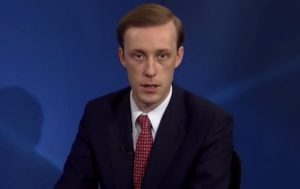A jury found fallen Silicon Valley star Elizabeth Holmes guilty of fraud for turning her blood-testing startup Theranos into a sophisticated sham — one that duped billionaires and other unwitting investors into backing a seemingly revolutionary company whose medical technology never worked as Holmes promised.
The 37-year-old Holmes was found guilty on 2 counts of wire fraud and 2 counts of conspiracy to commit fraud on Monday after 7 days of deliberation. The jury decision followed a three-month trial featuring dozens of witnesses — including Holmes herself — and numerous exhibits. She now faces up to 20 years in prison for each guilty count, although legal experts say she is unlikely to receive anything close to the maximum sentence.
The jury deadlocked on the three remaining charges. The split verdicts are “a mixed bag for the prosecution, but it’s a loss for Elizabeth Holmes because she is going away to prison for at least a few years,” said David Ring, a lawyer who has been following the Holmes case closely.
Federal prosecutors spent much of the trial providing testimony and evidence to depict Holmes as a charlatan obsessed with fame and fortune. In seven days on the witness stand, Holmes cast herself as a visionary trailblazer in male-dominated Silicon Valley who was emotionally and sexually abused by her former lover and business partner, Sunny Balwani.
Also Read: The rise and fall of Theranos founder Elizabeth Holmes
Holmes, who had bowed her head several times before the jury was polled by U.S. District Judge Edward Davila, remained seated and expressed no visible emotion as the verdicts were read. Her partner, Billy Evans, showed agitation in earlier moments but appeared calm during the verdict reading. After the judge left the courtroom to meet with jurors individually, Holmes got up to hug Evans and her parents before leaving with her lawyers.
Prison time would separate Holmes from her newborn son, whose birth last summer forced a delay in the trial. Holmes’ parenthood was not disclosed to the jury during the trial. Davila will determine Holmes’ sentence.
The trial provided a detailed look inside one of the go-to- moves of Silicon Valley entrepreneurs — conveying a boundless optimism regardless of whether its warranted or not, known as “fake it ’til you make it.”
That ethos helped hatch groundbreaking companies such as Google, Netflix, Facebook, and Apple — the latter, of course, co-founded by one of Holmes’ heroes, Steve Jobs.
But the bold dream Holmes pursued when founded Theranos in 2003 at the age of 19 had become a mortifying nightmare by the time she was indicted on felony charges in 2018. Her conviction might lower the wattage — at least temporarily — on the brash promises and bold exaggerations that have become a routine part of the tech industry’s innovation hustle.
During that span, Holmes went from an unknown to a Silicon Valley sensation who had amassed a $4.5 billion fortune on paper to a vilified failure. Her downfall has been dissected in documentaries, books, podcasts and soon will be rehashed in a Hulu TV series called “The Dropout” starring Amanda Seyfried in the lead role.
Holmes set out to create a more humane, convenient, and cheaper way to scan for hundreds of diseases and other health problems by taking just a few drops of blood with a finger prick instead of sticking a needle in people’s veins. She aimed to upend an industry dominated by giant testing companies such as Quest Diagnostics and Labcorp, starting with setting up “mini-labs” in Walgreens and Safeway stores across the U.S. that would use a small Theranos device called the Edison to run better, faster and less intrusive blood tests.
The concept — and the way Holmes presented it — enthralled wealthy investors eager to buy an early stake in a game-changing company. It helped Theranos raise more than $900 million from savvy billionaires such as media mogul Rupert Murdoch and software magnate Larry Ellison, as well as well-to-do families such as the Waltons of Walmart and the DeVos clan behind Amway.
Holmes also wooed a well-connected board that included two former U.S. Secretaries of State, Henry Kissinger and the late George Shultz: two former Secretaries of Defense, Gen. James Mattis and William Perry; former Sen. Sam Nunn; and former Wells Fargo CEO Richard Kovacevich. She even charmed former President Bill Clinton in an on-stage presentation and impressed then-Vice President Joe Biden, who effusively praised her during a 2015 tour of a Theranos lab.
What most people didn’t know at the time was that Theranos’ blood-testing technology kept producing misleading results. That forced patients to undergo regular venous blood draws instead of the promised fingersticks and led Theranos to secretly test those samples using conventional machines in a traditional laboratory setting. Evidence presented at the trial also showed Holmes lied about purported deals that Theranos had reached with big drug companies such as Pfizer and the U.S. military.
The deception eventually backfired in 2015 after a series of explosive articles in The Wall Street Journal and a regulatory audit of Theranos uncovered potentially dangerous flaws in the company’s technology, leading to the company’s eventual collapse.
During her seven days of testimony, Holmes occasionally expressed contrition for her handling of a variety of issues, but often contended that she’d forgotten the circumstance surrounding some of the key events spotlighted by the prosecution. She insisted she never stopped believing that Theranos was on the verge of refining its technology.
Instead, she heaped blame on Balwani, who she secretly lived with while he was Theranos’ chief operating officer from 2009 to 2016. Holmes testified that Balwani let her down by failing to fix the laboratory problems that he had promised to fix and, in the most dramatic testimony of the trial, alleged he had turned her into his pawn through a long-running pattern of abuse while exerting control over her diet, sleeping habits and friendships. This all occurred, she said, after being raped by an unnamed assailant while she was still enrolled at Stanford.






